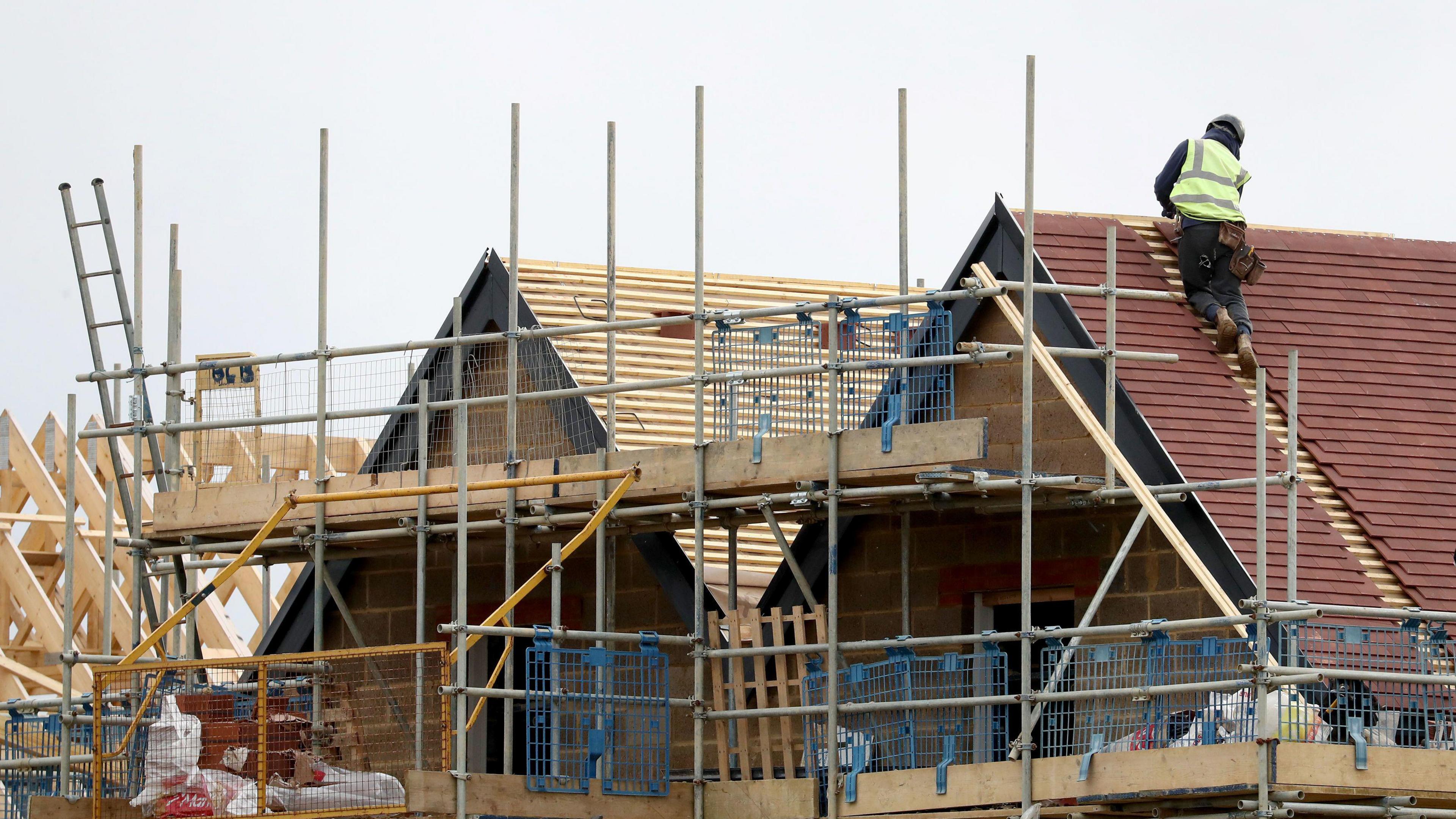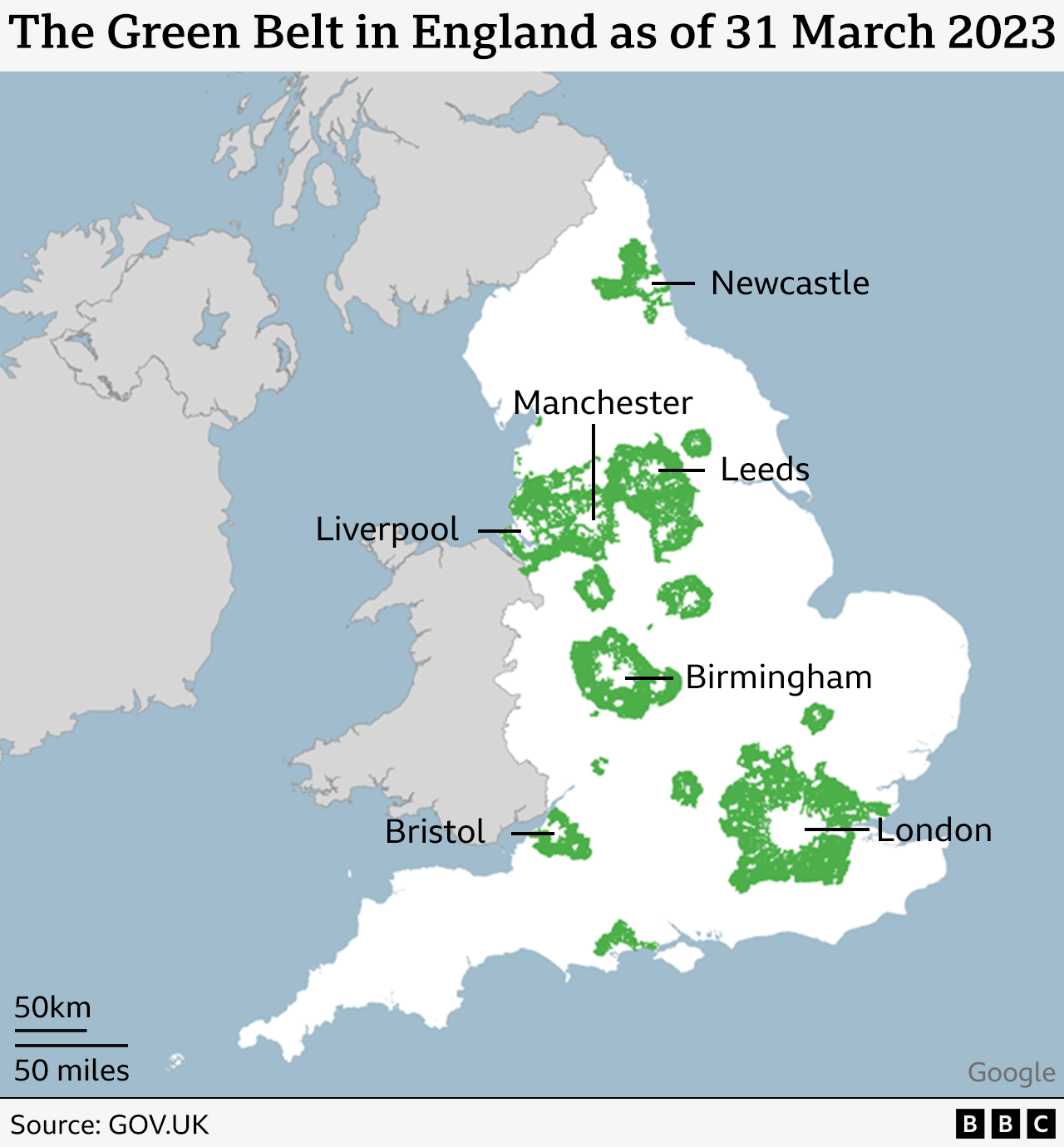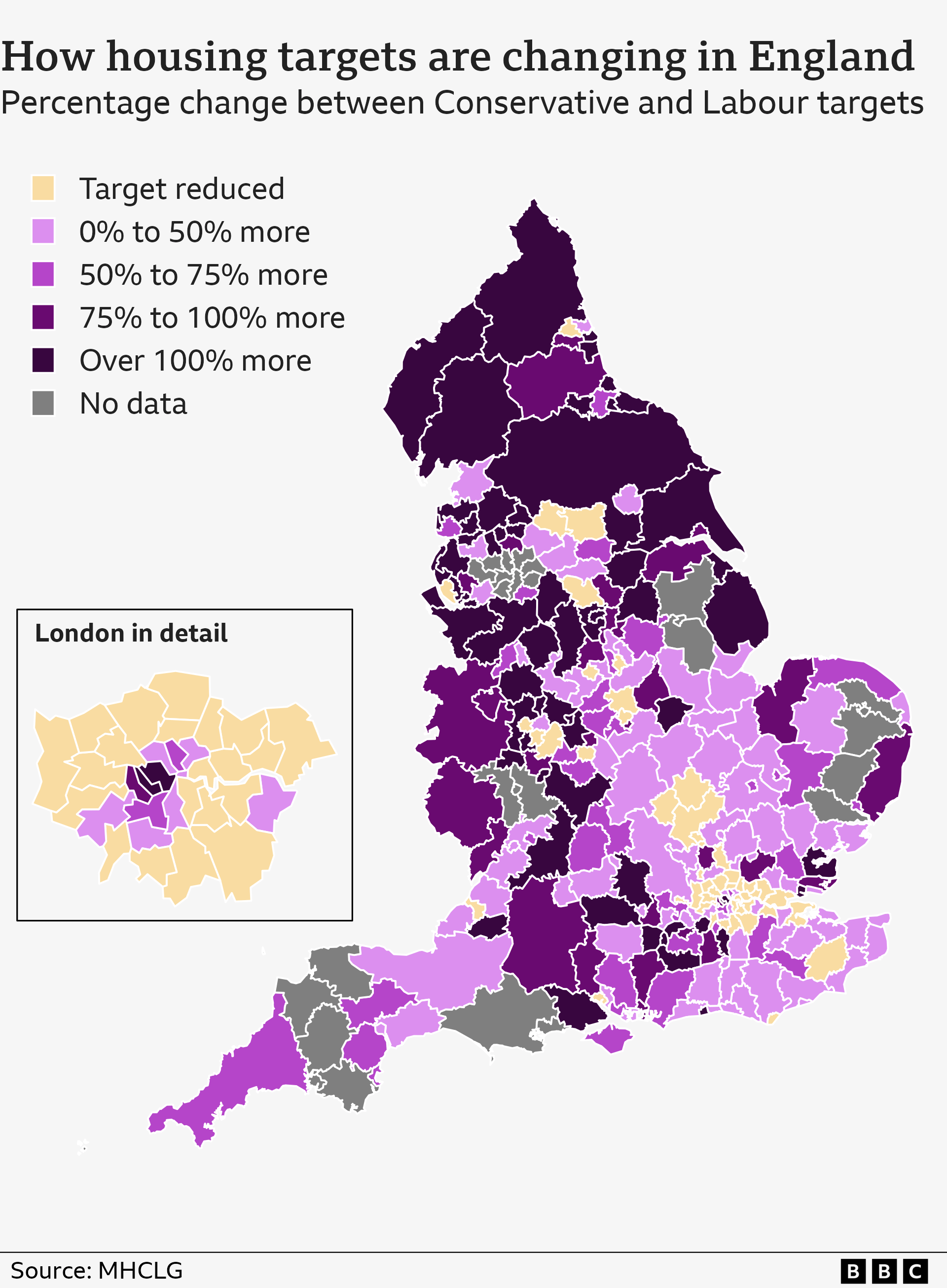Housing plans not war on rural England, says minister

- Published
The government is not "waging war on rural England" with plans to force councils to allow more homes to be built in their areas, the housing minister has said.
Matthew Pennycook hit back at Conservative claims the government was "concreting over" green belt land.
He told MPs new housing targets for local councils were focused on parts of the country where housing was least affordable - and it was "wrong" to say rural areas would bear the brunt of the changes.
Prime Minister Sir Keir Starmer has made increasing housebuilding a key priority, promising 1.5 million new homes in England over the next five years.
"Our plan for change will put builders not blockers first, overhaul the broken planning system and put roofs over the heads of working families and drive the growth that will put more money in people's pockets," said the PM.
However, councils, including some Labour-run authorities, have previously raised concerns higher housing targets will be almost impossible to achieve.
They point to strains on local infrastructure, land shortages and a lack of capacity in the construction industry as among the constraints on housebuilding.
The government has said councils must meet their housing targets and that, if they refuse to put a local plan in place to do this, ministers will intervene and in extreme cases could take over plans themselves.
Housing campaigners have welcomed the policy, saying it is vital for addressing the shortage of homes.
Eve McQuillan, who is 31 and lives in east London, is one of the millions of people across the country trying to get on the housing ladder.
"If you have a job… you should be able to afford a decent place to live," she told BBC Radio 4's World at One programme.
"Ultimately, for my generation, it's just not possible, it is just so expensive."
Neil Jefferson, chief executive of the Home Builders Federation, also welcomed the changes to the planning system.
But he said further interventions were needed to meet the government's targets, including more support for first-time buyers and an increased capacity to process planning applications.
Where does the government want 1.5 million new homes?
- Published12 December 2024
Starmer's plan to solve housing crisis faces first big test
- Published12 December 2024
Woman with £50,000 savings still can't buy a house
- Published13 July 2023
Under the updated National Planning Policy Framework (NPPF), external, previously developed land - known as "brownfield" sites - will be prioritised for new homes.
However, Pennycook told the House of Commons brownfield land alone would not be enough to deliver the number of homes the country needed.
Councils will also be ordered to review green belt boundaries - which were created to prevent urban sprawl - by identifying lower-quality "grey belt" land that can be built on.
Building on green belt land, which is higher quality, will be allowed if other options have been exhausted - but it must comply with a set of "golden rules," the government said.
Developers will need to prioritise necessary infrastructure, such as nurseries and GP surgeries, as well as guarantee affordable housing and access to green spaces.
It is still not clear what will count as grey belt land.
The government has previously given disused petrol stations and car parks as examples.
It gave some further explanation in the document, such as land that does not preserve the character of historic towns - but councils will have to wait until the new year for full guidance.

Pennycook said the government had listened to feedback from councils who wanted housing to be better targeted at areas where affordability pressures were most acute.
London, the south-east and east of England now have higher housing targets than those proposed by the government in July, while the targets for other regions are lower.
However, Conservative shadow housing secretary Kevin Hollinrake said: "This planning framework pushes development to rural areas, concreting over green belt, green fields and over our green and pleasant land, rather than focusing on supporting building in urban areas, where we need to build the most."
He added that it was "vital" homes were built in the right places with the right infrastructure and the government would "bulldoze through the concerns of local communities".
Craig Bennett, chief executive of the Wildlife Trusts, said there was a danger the environment could suffer from plans to boost housebuilding.
He told BBC Radio 4's Today programme it would be "a colossal, historic missed opportunity" to build new homes "in a way that destroys nature, rather than at the same time, restores and rebuilds our natural infrastructure".
Overall, councils are being told they must reach a combined target of 370,000 new homes a year – although the government has not set a date for when this will be achieved.
There is an expectation that not all the homes planned for by this target will be delivered within five years.
The government has also promised £100m of extra funds for councils and 300 additional planning officers to speed up decision-making processes.
It said local authorities would have 12 weeks to come up with timetables for new housebuilding plans or risk intervention from ministers.
The Local Government Association (LGA) said tackling local housing challenges would require a "collaborative approach" between councils and the government.
Councils and communities who know their local areas well are "best placed to make judgement decisions on how to manage competing demand for land," LGA spokesman Adam Hug said.
